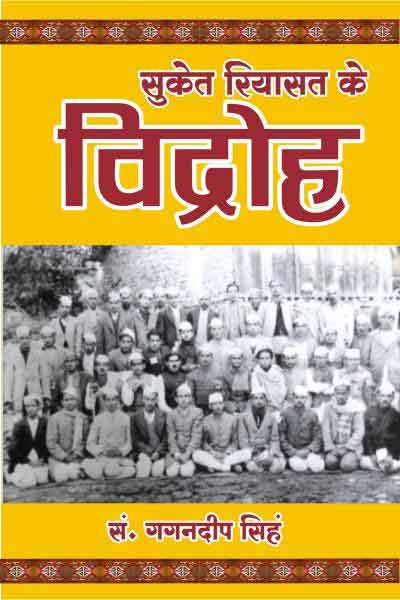
Marx had famously said that the history of all existing societies is the history of class struggle. In this context, if one looks into the history of Himachal Pradesh then one can hardly disregard the fact that classes of several sorts had their struggles in the spatial dimensions of what is now known as Himachal. The homogeneity of society which this name tries to hard can easily smash if one care for the details which the particular combination of material circumstances, space and time has produced here. The diverse socioeconomic conditions are the results of the struggle for production and distribution which the society as a unit has historically and materially evolved up to. It’s the material manifestation of such struggles that art, culture, ideology and political life of the people are surfaced in human life. Throughout the history of human civilization, has have tried theorizing the society, they have laid down their reflective ideas on the struggles involved in the production process. They have tried to find meaning in the constant struggles waged by one class against the other. Every writer or intellectual is trying to express an intellectual argument for the role which a particular class plays in society. This very writing is in itself class writing. Every writer is a representative of a particular class ideology.
The writing on Himachal Pradesh in particular and Himalayan in general can be categorized into different groups one is the writing by intellectuals like Jagmohan Balokhara who presents Himachal history from the perspective of the ruling class. They view history as the history of empire building. They ignore the daily struggle of the working class against the exploitative ruling class in different stages of history. For Jagmohan, Himachal is the land of the deltas, that Himachal is the adobe of Hinduism. He does not even recognize the history of the struggle between local rulers and the foreign rulers who came and established their due in Himachal society. This loot by the non-hill rulers has been justified by such writers in the name of the Bengal rulers being Hindu. The colonial historiography seeks to establish Himachal as a monolithic land of upper-caste Hindus who practised Brahmanism from the very inception. Richard King has pointed out that how the British imperialist power has constructed Hinduism as a religion of the upper caste. He wrote in his book Hinduism an oriental construct that Hinduism has been created at the effort of British imperialist power and big capitalist of India who has been subservient to imperialism. Acting on this plain these historians serve the politics of Hindutva which has its mission to co-opt the distinct religious and cultural heritage of Himachal in the Hindu fold. Such writers are the representative of kings, aristocrats and capitalists of the present society. Therefore for them, the struggle of people against feudal nobility is invisible. The violent revolt of the people against feudal kings and officers have been invisible.
Another group of intellectuals who have been writing on Himachal are those who view history as the history of unity between classes who have been struggling in the process of production. For them, society exists as mutual relations between different classes involved in production. The change in society however radical erupts from slow and steady changes brought about by reforms from above I.e. reforms coming up from the political structure of the ruling class. Hence for them, class exists only to be ruled by the other classes and the change in such arrangement is only through gradual reforms. Aniket Alam is one of them, these intellectuals are well represented in CPM and CPI. For Alam, the issue of land has been resolved through and reforms policies brought by the state government. For Alam Himachal now is a developed economy, if it takes care of working-class rights here and there. And also compensate the people whose land forest and land it has acquired in the name of development then the fissures in society can be filled up. They are pro caste in their inherent build-up. Seldom do they recognize the brutality with which Dalit and Adivasis of the society were used as a working force for the generation of surplus for the landlords and other feudal classes. The barbaric untouchability due to the caste system has also been left unhistoricized by these writers.
In this backdrop, if we see the new book namely ‘Vidroh’ by Gagan Deep Singh, then we find that the book is not new just temporarily but it is also new because it tries to establish a vision of history that is not just pro-people but also considerate for the struggles waged by the oppressed and exploited class against the ruling class, the book is the marker of the people who have been hitherto unnamed by the historians. It brings in the glorious tradition of anti-feudal and anti-imperialist struggle in Himachal. It tries to infuse a sense of pride and belonging in the heart of Himachali who can take pride in the great skit revolt and other such anti-feudal struggles mentioned in the book. This is contrary to what the ruling class and reformist historians try to conceptualize. Hitherto the historians had us believe that Hinduism is the inherent part of Himachal society but Gagan brought before us the brutal plundering which the Aryan rulers followed by the Bengali rulers did in Himachal. As to how the local rulers were defeated by the foreign plunderers and how they got constructed history in such a way that the brutal plunderers have been presented as heroes of the people, they are called great kings while the people who struggle against this feudalism has been invisible throughout the discourse. The effort of the brahminical power to co opt the distinct cultural identity of Himachal has been we’ll document in the book. Against this effort, the materiality of cultural identity has also been presented in this book. The struggle for land water and forest has been depicted in the chapter on land reform. The scam of land reform and the unfinished task of the anti-feudal struggle has also been mentioned in the book. In the name of land reform only here and there has bad land and infertile land has been given to landless Dalit peasants. In the name of reform, the big bureaucracy acquired land in the mountains. This has not just triggered economic and social unrest but have also caused grave ecological damage to the biodiversity in Himachal Pradesh.
The writer has attempted to rekindle the revolutionary aspect of Himachal society, tracing the revolutionary role of its people from the pre-Vedic period to the anti-imperialist and anti-feudal struggle in the era of British imperialism; the writer appeals to the broad masses of people in the region to mask off all the impediments the progress of human society. An imagination of society free from all sorts of exploitation is ingrained in writers writing. Historically, the people here were militant and fought against several sorts of exploitation and oppression but the present ruling class conveniently portray them as pacifist and dull. This book rediscovers the struggling spirit of people. But have not been successful in clearly demarcating the changes in the production process of society from ancient times to the modern period. There is little analysis of the social and economic structures that facilitated the existence of society at a particular instance of history. The writer has written clearly about the struggle of a feudal aristocrat and landless and poor peasant but is silent about the pre feudal production process in society.
In the spatial context of Himachal, the book is unfit for claiming anything about Himachal as a whole, except for Suket very little is written about the other regions of Himachal. The book is silent about the history of class struggle in the trans-Himalayan and Greater Himalayan regions of Himachal. While depicting the people’s history it is important to write about the economic social and political conditions of women in general. The oppression and exploitation of women bring them close to every revolutionary conditioning in society, the writer is silent about the role of women in these revolts. The perpetual denial of women role in the historical development of society is left unquestioned by Gagan. I hope in the coming years the writer will seriously consider this.
Buy the book here https://notionpress.com/read/suket-riyast-ke-vidroh-gagandeep-singh
Uttam Singh is a researcher and activist.















































